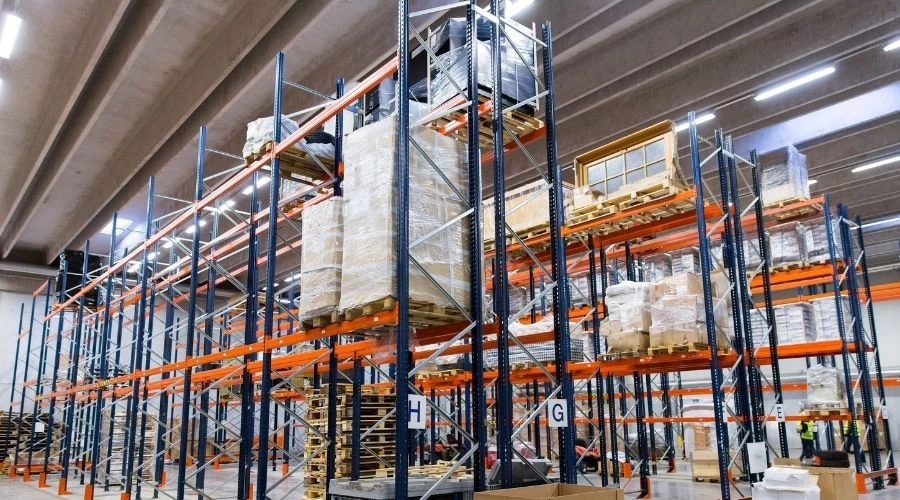
In today's fast-paced world, where efficiency and productivity are paramount, the racking and storage solutions in warehouses have undergone a significant technological revolution. With the advent of advanced technologies, traditional storage methods are being replaced by innovative and automated systems, resulting in optimized warehouse operations. In this article, we will explore the various technological advancements in racking and storage solutions and the benefits they bring to the warehouse industry.
In the past, warehouse storage heavily relied on conventional pallet racking, shelving systems, and mezzanine floors to store and organize their inventory. Because of technological advancement, these methods were somewhat effective, but they had limitations in terms of efficiency, accessibility, and space utilization.
One of the most significant advancements in racking and storage solutions is the implementation of Automated Storage and Retrieval Systems (AS/RS). These systems utilize computer-controlled mechanisms to automatically handle the storage, retrieval, and movement of inventory within the warehouse. By eliminating manual intervention, AS/RS systems significantly improve efficiency, reduce errors, and optimize space utilization.
Robotic technologies and artificial intelligence (AI) have revolutionized the warehouse industry. Robots equipped with AI capabilities can perform various tasks, such as picking and packing, inventory tracking, and even autonomous navigation. The integration of robotics and AI not only enhances operational efficiency but also reduces labor costs and improves order accuracy.
The Internet of Things (IoT): Transforming Warehouse Management
The Internet of Things (IoT) has brought a new level of connectivity and intelligence to warehouse management. By leveraging IoT devices and sensors, warehouses can collect real-time data on inventory levels, environmental conditions, and equipment performance. This data enables proactive decision-making, predictive maintenance, and efficient inventory management.
Maximizing Space Utilization: Vertical Racking Systems
To maximize space utilization, warehouses are increasingly adopting vertical racking systems. These systems utilize the height of the warehouse, allowing for multiple levels of storage. Vertical racking systems are particularly beneficial for warehouses to optimize available vertical space, reduce the warehouse footprint, and increase storage capacity. By utilizing advanced lifting mechanisms and intelligent design, vertical racking systems enable efficient retrieval and storage of goods, contributing to streamlined operations.
Flexibility and Adaptability: Mobile Racking Systems
Mobile racking systems offer a flexible and adaptable solution for warehouses with limited space or those requiring frequent reconfiguration. These systems consist of racks mounted on mobile bases that can be moved along tracks. By eliminating the need for fixed aisles, mobile racking systems maximize storage capacity while still allowing access to individual racks when needed.
Increased Efficiency and Productivity
Automation and integration of advanced technologies streamline warehouse operations, resulting in improved efficiency and productivity. With faster order fulfillment, reduced manual errors, and optimized picking and packing processes, warehouses can meet customer demands more effectively while minimizing delays and bottlenecks.
Enhanced Inventory Management
Real-time data collection and analysis provided by modern racking and storage solutions enable warehouses to have better control over their inventory. Accurate inventory tracking, demand forecasting, and automated replenishment systems ensure optimal stock levels, reducing the risk of stockouts or excess inventory. This leads to improved customer satisfaction and cost savings.
Space Optimization and Cost Savings
By utilizing innovative racking and storage solutions, warehouses can optimize their available space, reducing the need for expansion or additional facilities. Vertical racking systems and mobile racking systems maximize storage capacity, enabling warehouses to store more goods within the same footprint. This not only saves costs associated with acquiring additional space but also reduces operational expenses related to heating, lighting, and maintenance.
Initial Investment and Implementation Costs
Implementing advanced racking and storage systems often requires a significant upfront investment. The cost of purchasing and installing automated systems, robotics, IoT devices, and infrastructure upgrades can be substantial. However, it is important to consider the long-term benefits and return on investment that these technologies offer.
Integration with Existing Systems
Warehouses may already have established systems, such as warehouse management software (WMS) or enterprise resource planning (ERP) systems. Integrating new technologies with existing systems can be complex and require careful planning and customization. Ensuring seamless communication and data exchange between different systems is crucial for efficient warehouse operations.
Augmented Reality (AR) for Warehouse Navigation
AR technology can revolutionize warehouse navigation by providing real-time guidance to warehouse personnel. Using smart glasses or mobile devices, workers can visualize optimal paths, locate items, and receive instructions for efficient picking and inventory management.
Predictive Analytics for Demand Forecasting
By leveraging predictive analytics algorithms, warehouses can analyze historical data, market trends, and external factors to forecast future demand accurately. This enables proactive inventory management, reducing the risk of stockouts or overstocking, and improving overall supply chain efficiency.
Blockchain Technology for Transparent Supply Chain Management
Blockchain technology offers enhanced transparency and traceability in supply chain management. By recording and verifying transactions across a decentralized network, warehouses can ensure the integrity of their inventory data, track product origins, and streamline cross-border trade.
Conclusion
Technological advancements in racking and storage solutions have revolutionized the warehouse industry. From automated systems and robotics to IoT integration and space optimization techniques, warehouses are benefiting from increased efficiency, improved inventory management, enhanced safety, and cost savings. While challenges exist, successful case studies and future trends demonstrate the immense potential for further advancements. Embracing these technologies will undoubtedly contribute to the growth and success of modern warehouses. If you are looking to incorporate this advanced racking and storage solution for your warehouse then look no further, 13sqft.com has got your back !!
POSTED BY
Ishika Adhana
Digital Marketing Executive